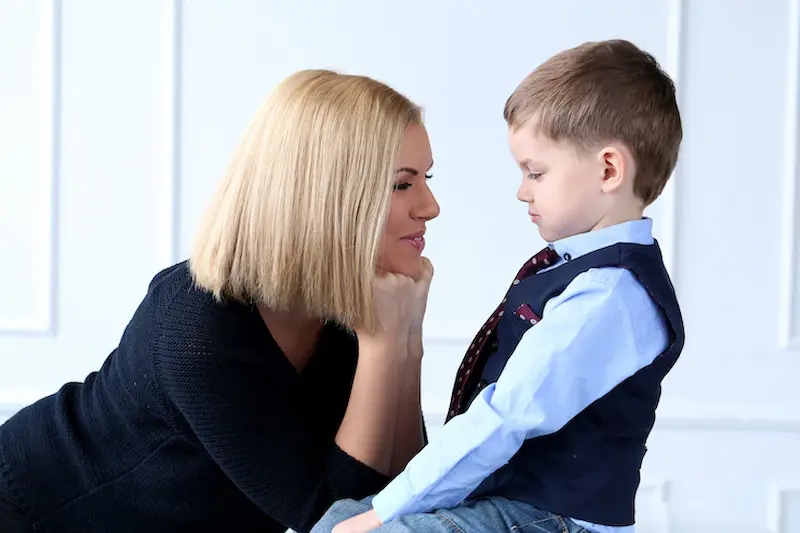How to Make Kids Listen Effectively: Effective communication with children is a crucial aspect of parenting. As parents, we want our children to listen and understand our instructions willingly. However, this can sometimes be challenging. This blog post aims to provide you with valuable tips and strategies on how to make kids listen effectively. By practicing these techniques, you can build a stronger connection with your child, improve cooperation, and create a positive and respectful environment at home.
1. Active Listening


Active listening is the foundation of effective communication. Show your child that you value their thoughts and feelings by giving them your full attention when they speak. For example, when your child tells you about their day at school, put down your phone or other distractions, make eye contact, and ask follow-up questions to show that you’re genuinely interested.
Active listening involves not only hearing the words but also understanding the emotions behind them. If your child seems upset, you might say, “I can see that you had a tough day. Would you like to talk about what happened?” By acknowledging their feelings, you create a safe space for them to express themselves.
2. Maintain Eye Contact


Maintaining eye contact while talking to your child helps convey that you are fully engaged in the conversation. It shows respect and encourages open communication. When discussing important matters or giving instructions, kneel down to their eye level and maintain eye contact to ensure they are listening and understanding.
For example, if you’re discussing the importance of road safety with your child, kneel down so you are at their eye level. You can say, “Looking both ways before crossing the road is crucial to stay safe. Let’s practice it together.” This approach not only ensures they are listening but also makes them feel heard and valued.
3. Speak Calmly
Using a calm and gentle tone is essential for effective communication. Shouting or yelling can lead to resistance and fear in children, making them less likely to listen. Instead, maintain a soothing and reassuring voice, even when addressing misbehavior.
For instance, if your child spills a drink, rather than yelling, you can calmly say, “It’s okay; accidents happen. Let’s clean it up together.” By doing so, you teach your child that mistakes are part of learning, and your calm approach helps them stay receptive.
4. Be Clear and Concise
Children, especially younger ones, may struggle to understand lengthy or complex instructions. Keep your messages clear and straightforward. Avoid using vague language or overcomplicating your requests.
For example, if you want your child to get ready for bed, instead of saying, “It’s getting late, and it’s time for bed. Please go brush your teeth, put on your pajamas, and pick out a book for us to read,” you can simplify it to, “It’s bedtime. Let’s brush teeth, put on pajamas, and choose a book.”
5. Use Positive Language


Framing your requests in a positive way can make a significant difference. Instead of focusing on what you don’t want your child to do, emphasize what you’d like them to do. This approach encourages cooperation and reduces resistance.
For instance, if your child is running indoors, instead of saying, “Don’t run inside the house,” you can say, “Please walk inside; it’s safer.” By using positive language, you guide your child towards the desired behavior.
Example:
Let’s say you want your child to clean their room. Rather than simply saying, “Clean your room,” you can implement these tips. You might say, “Sweetie, I need your help. Could you please pick up your toys and put them in the toy box? After that, let’s make your bed together. Thank you for being such a great helper!”
In this example, you acknowledge your child’s assistance and break the task into smaller, manageable steps. By using positive language and expressing gratitude, you create a positive atmosphere that encourages your child to listen and cooperate willingly.
| ALSO READ: | Social Skills and Child Development-5 Essential Social Skills Every Child Should Develop for Success |
6. Give Choices
Children, like adults, appreciate having a sense of control. Offering your child choices within reasonable limits allows them to feel empowered and respected. It can also make them more willing to listen and cooperate.
For instance, if you want your child to eat their vegetables, instead of insisting on a particular one, you can say, “Would you like broccoli or carrots with dinner tonight?” This way, you’re still achieving the goal of a balanced meal, but your child has some say in the matter.
7. Set Expectations
Clearly communicating your expectations is vital. Let your child know what you want them to do and why it’s important. When children understand the reasons behind your requests, they are more likely to comply willingly.
For example, if you want your child to finish their homework before watching TV, you can explain, “Homework is essential because it helps you learn and do well in school. Once it’s finished, you’ll have plenty of time to enjoy your favorite TV show.”
8. Praise and Encouragement


Positive reinforcement plays a significant role in making kids listen effectively. When your child follows instructions or behaves well, acknowledge and praise their efforts. This recognition boosts their self-esteem and reinforces good behavior.
Suppose your child completes their chores without reminders. In that case, you can say, “I’m so proud of how responsible you are. You did an excellent job with your chores today!” Such words of encouragement motivate your child to continue listening and cooperating.
9. Avoid Overload
Avoid overwhelming your child with too many instructions at once. Providing one task at a time ensures they can focus and succeed. Overloading them with multiple tasks can lead to confusion and resistance.
For instance, if you’re getting ready to leave the house, instead of saying, “Put on your shoes, grab your backpack, and don’t forget your lunchbox,” you can simplify it by saying, “Let’s start by putting on your shoes.” Once that’s done, you can move on to the next task.
10. Use Visuals
Visual aids, such as charts, pictures, or diagrams, can be especially helpful for younger children. These visuals provide a clear visual representation of tasks and routines, making it easier for kids to understand and follow instructions.
For example, you can create a bedtime routine chart with pictures of brushing teeth, putting on pajamas, and reading a book. Your child can use this chart as a visual guide, ensuring they complete each step.
Example:
Imagine you’re heading out for a family picnic. Instead of overwhelming your child with a long list of preparations, you can implement these tips. You might say, “We’re going for a picnic today, which will be so much fun! First, let’s pack some sandwiches together. Would you like peanut butter and jelly or turkey and cheese? Great choice! Now, let’s grab a blanket and some outdoor toys. Lastly, we’ll need to put on sunscreen to stay safe in the sun. You’re such a helpful picnic planner!”
In this example, you’ve engaged your child in the preparations by offering choices and maintaining a positive tone. You’ve also broken down the tasks into manageable steps and provided encouragement, fostering a cooperative and enjoyable experience.
By incorporating these ten effective tips into your parenting approach, you can enhance your child’s listening skills, strengthen your bond, and create a more harmonious family dynamic. Remember that effective communication takes time and patience, so be consistent and adaptable as you implement these strategies in your daily interactions with your child.
| ALSO READ: |
| Small Things That Reveal Your Personality |
| How Healthy is Fitness? Connection Between Physical Activity and Well-being |
How to Make Kids Listen Effectively
FAQ
Q1: Why is active listening important in improving a child’s listening skills?
A1: Parenting-Active listening sets a positive example for children and encourages them to reciprocate. When parents actively listen, it fosters trust, open communication, and a stronger parent-child relationship.
Q2: Can you provide more examples of using positive language with children?
A2: Certainly! Instead of saying, “Stop being so noisy,” you can say, “Let’s use indoor voices.” Using positive language helps children understand your expectations without feeling criticized.
Q3: Are these tips suitable for children of all ages?
A3: Yes, these tips can be adapted for children of various ages. However, younger children may benefit more from visual aids and simplified language, while older children may respond well to explanations of expectations.
Q4: How can I avoid overloading my child with instructions when there’s a lot to do?
A4: Prioritize tasks and break them down into manageable steps. Provide clear instructions for one task at a time, and once that’s completed, move on to the next.
Q5: What if my child is resistant despite using these strategies?
A5: Resistance is a common part of child development. If your child is resistant, maintain your calm and try to understand their perspective. Sometimes, offering choices or explaining the importance of a task can help reduce resistance over time.

